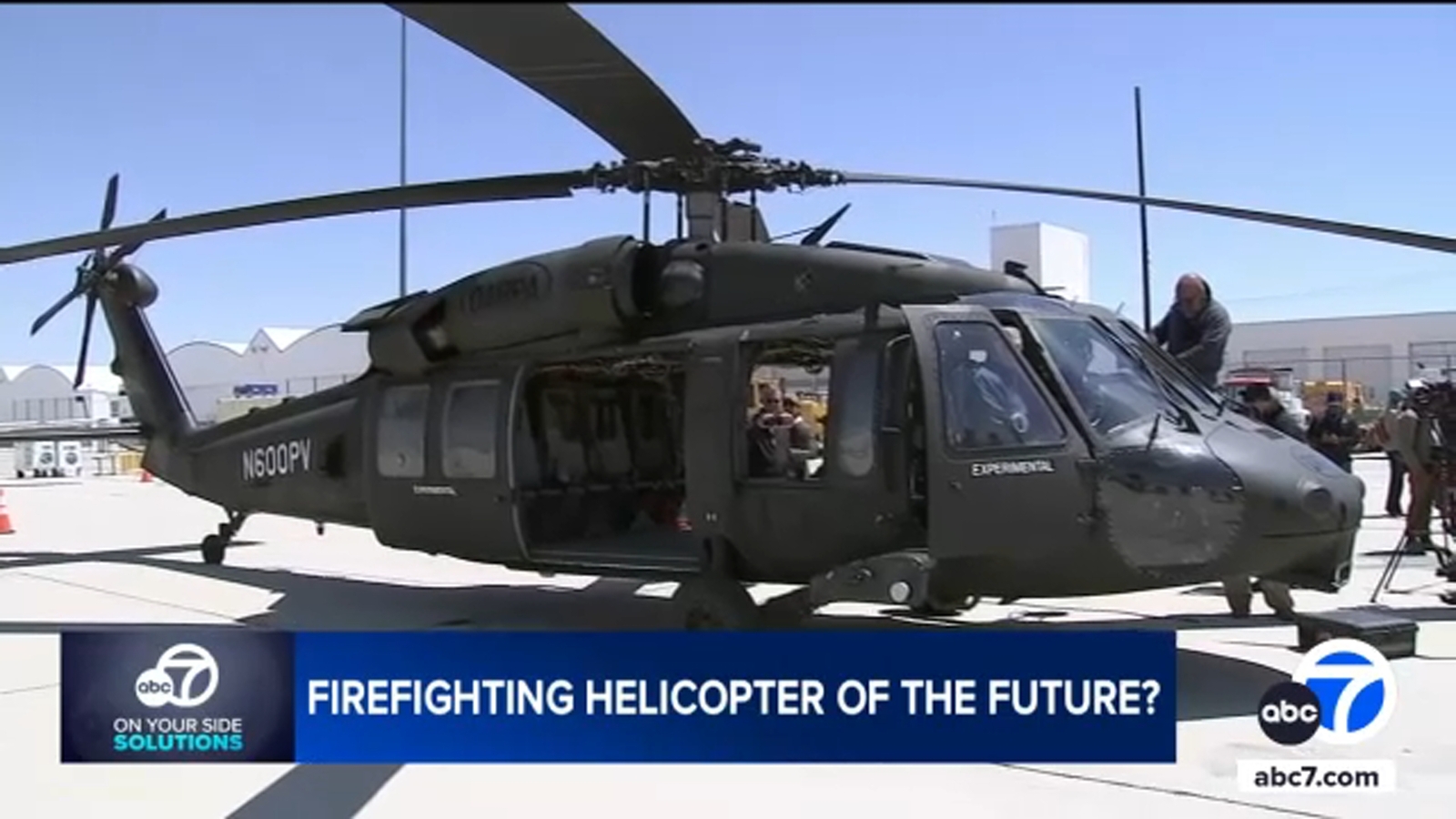Could Autonomous Helicopters Like Firehawk Solve Wildfire Challenges?

Welcome to your ultimate source for breaking news, trending updates, and in-depth stories from around the world. Whether it's politics, technology, entertainment, sports, or lifestyle, we bring you real-time updates that keep you informed and ahead of the curve.
Our team works tirelessly to ensure you never miss a moment. From the latest developments in global events to the most talked-about topics on social media, our news platform is designed to deliver accurate and timely information, all in one place.
Stay in the know and join thousands of readers who trust us for reliable, up-to-date content. Explore our expertly curated articles and dive deeper into the stories that matter to you. Visit Best Website now and be part of the conversation. Don't miss out on the headlines that shape our world!
Table of Contents
Could Autonomous Helicopters Like Firehawk Solve Wildfire Challenges?
Wildfires are raging across the globe with increasing frequency and intensity, posing a devastating threat to lives, property, and ecosystems. Current firefighting strategies, while valiant, often struggle to keep pace with the rapid spread of these infernos. Could autonomous helicopters, like the innovative Firehawk, offer a game-changing solution? The answer is complex, but the potential is undeniably exciting.
The devastating impact of wildfires is undeniable. From the catastrophic losses in Australia's bushfires to the ongoing challenges in California and across the Mediterranean, the need for more effective firefighting techniques is paramount. Traditional methods, relying heavily on human pilots and ground crews, face limitations in speed, reach, and endurance, especially in remote or hazardous terrain.
The Firehawk Advantage: Autonomous Aerial Attack
Enter autonomous helicopters, a technology rapidly advancing to address these critical limitations. Systems like the Firehawk, while still under development in many aspects, represent a significant leap forward. These unmanned aerial vehicles (UAVs) offer several key advantages:
- Increased Speed and Efficiency: Autonomous helicopters can respond faster than human-piloted aircraft, reaching remote fire zones with greater speed and precision. They can operate continuously for extended periods, unlike human crews who require rest breaks.
- Reduced Risk to Human Life: Deploying autonomous helicopters reduces the danger to human firefighters, who often face perilous conditions battling wildfires. This is a crucial advantage, saving lives and mitigating risks associated with aerial firefighting.
- Enhanced Precision and Targeting: Equipped with advanced sensors and AI-powered navigation, autonomous helicopters can pinpoint the precise locations requiring immediate attention, maximizing the effectiveness of water or retardant drops.
- Improved Data Collection: Beyond firefighting, these autonomous systems can gather valuable real-time data on fire spread, intensity, and environmental conditions, informing strategic decision-making on the ground. This data-driven approach could significantly improve wildfire management.
Challenges and Limitations
Despite the promise, autonomous firefighting helicopters face significant hurdles:
- Technological Advancements: The technology needs further refinement to ensure reliable operation in challenging weather conditions and complex terrains. Robust AI and sensor systems are crucial for safe and effective autonomous flight.
- Regulatory Frameworks: Clear and comprehensive regulations governing the operation of autonomous helicopters in airspace shared with manned aircraft are essential to prevent accidents and ensure safety.
- Infrastructure and Maintenance: A robust infrastructure for charging, maintenance, and repair of these complex systems is necessary for widespread deployment.
- Public Acceptance: Building public trust and addressing concerns about safety and potential misuse are critical for successful integration into wildfire management strategies.
The Future of Wildfire Fighting: A Collaborative Approach
The future of wildfire management likely involves a collaborative approach, combining the strengths of human expertise with the capabilities of autonomous technologies. While autonomous helicopters like Firehawk cannot completely replace human firefighters, they have the potential to significantly enhance current strategies, leading to faster response times, more effective containment, and reduced risks. Further research, development, and regulatory advancements are crucial to unlock the full potential of this technology and help us combat the growing threat of wildfires.
Call to Action: Stay informed about the latest advancements in autonomous firefighting technology and support initiatives promoting research and development in this vital area. The fight against wildfires requires innovation, collaboration, and a commitment to protecting our planet.

Thank you for visiting our website, your trusted source for the latest updates and in-depth coverage on Could Autonomous Helicopters Like Firehawk Solve Wildfire Challenges?. We're committed to keeping you informed with timely and accurate information to meet your curiosity and needs.
If you have any questions, suggestions, or feedback, we'd love to hear from you. Your insights are valuable to us and help us improve to serve you better. Feel free to reach out through our contact page.
Don't forget to bookmark our website and check back regularly for the latest headlines and trending topics. See you next time, and thank you for being part of our growing community!
Featured Posts
-
 Mallory Swanson Announces Pregnancy Impact On Uswnt And Carli Lloyds Response
May 08, 2025
Mallory Swanson Announces Pregnancy Impact On Uswnt And Carli Lloyds Response
May 08, 2025 -
 Taveras Claimed Off Waivers By Team Name A Surprising Move
May 08, 2025
Taveras Claimed Off Waivers By Team Name A Surprising Move
May 08, 2025 -
 Cleveland Browns Rookie Shedeur Sanders The No 12 Story
May 08, 2025
Cleveland Browns Rookie Shedeur Sanders The No 12 Story
May 08, 2025 -
 Ufl Week 6 Rowland And Perkins Dominate In Defenders Panthers Clash
May 08, 2025
Ufl Week 6 Rowland And Perkins Dominate In Defenders Panthers Clash
May 08, 2025 -
 Eastern Conference Semifinals Game 2 Preview Panthers Vs Maple Leafs
May 08, 2025
Eastern Conference Semifinals Game 2 Preview Panthers Vs Maple Leafs
May 08, 2025
